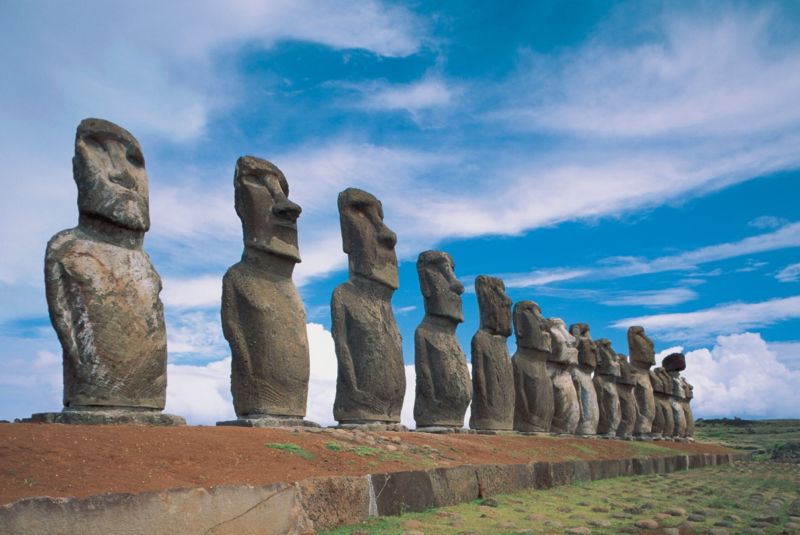New study challenges popular “collapse” hypothesis for Easter Island

Enlarge / Moai statues in a row, Ahu Tongariki, Easter Island, Chile. (credit: De Agostini Picture Library/Getty Images)
In his bestselling 2005 book Collapse, Jared Diamond offered the societal collapse of Easter Island (aka Rapa Nui), around 1600, as a cautionary tale. Diamond essentially argued that the destruction of the island's ecological environment triggered a downward spiral of internal warfare, population decline, and cannibalism, resulting in an eventual breakdown of social and political structures. It's a narrative that is now being challenged by a team of researchers who have been studying the island's archaeology and cultural history for many years now.
In a new paper published in the Journal of Archaeological Science, the researchers offer intriguing evidence that suggests the people of Rapa Nui continued to thrive well after 1600. The authors suggest this warrants a rethinking of the popular narrative that the island was destitute when Europeans arrived in 1722.
"The degree to which their cultural heritage was passed on—and is still present today through language, arts, and cultural practices—is quite notable and impressive," co-author Robert DiNapoli, a doctoral student in anthropology at the University of Oregon, told Sapiens. "This degree of resilience has been overlooked due to the collapse narrative and deserves recognition."
Read 17 remaining paragraphs | Comments
from Gaming & Culture – Ars Technica https://ift.tt/3gNk9pQ